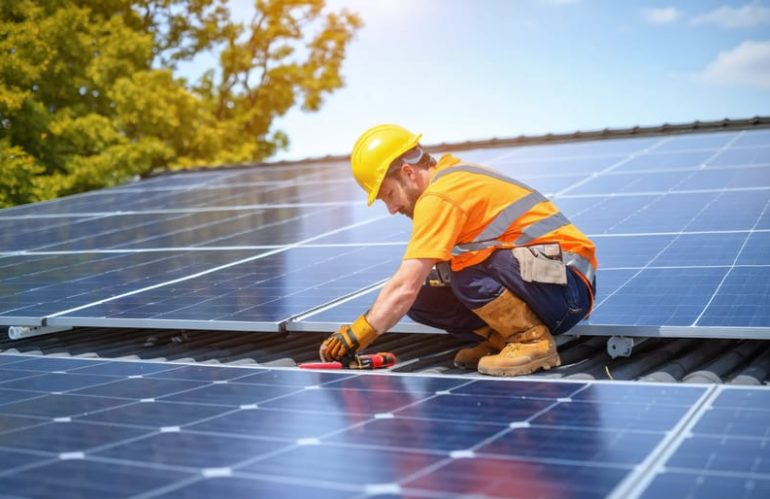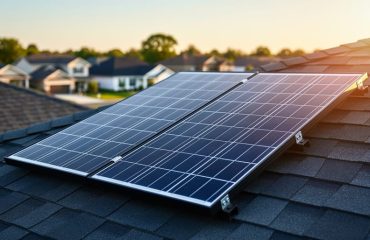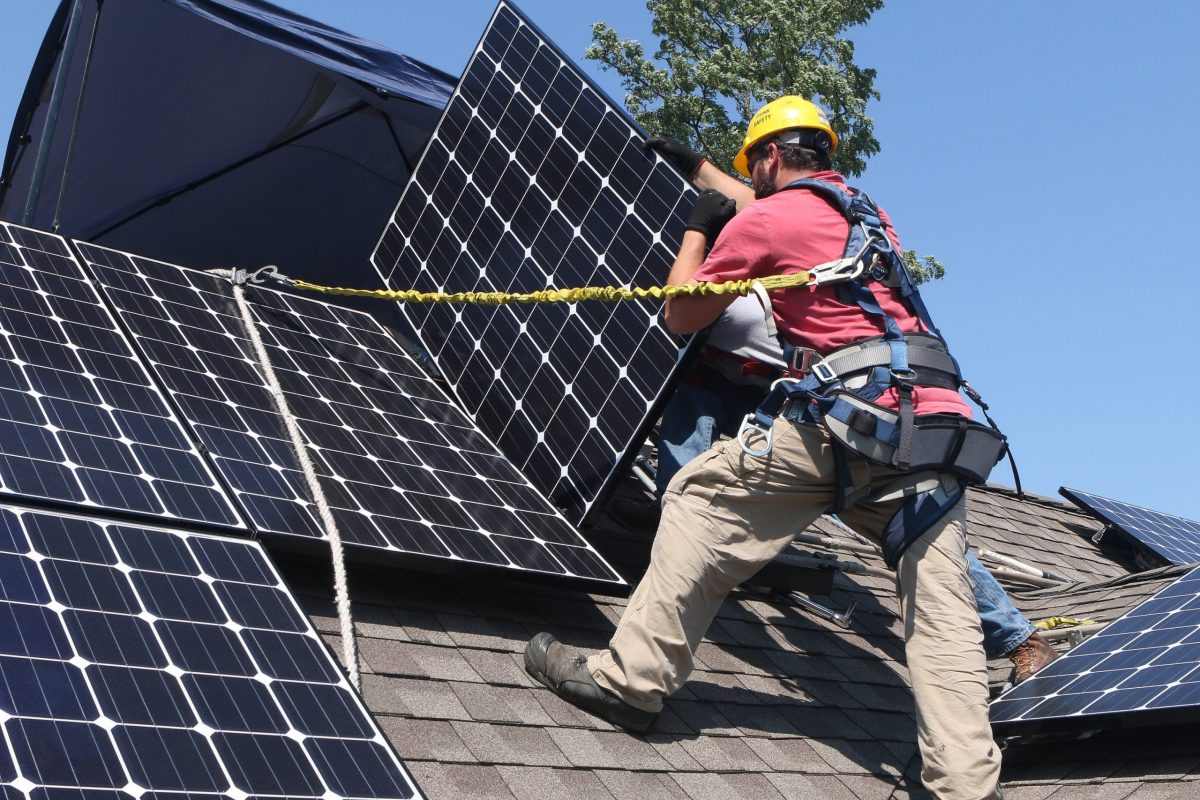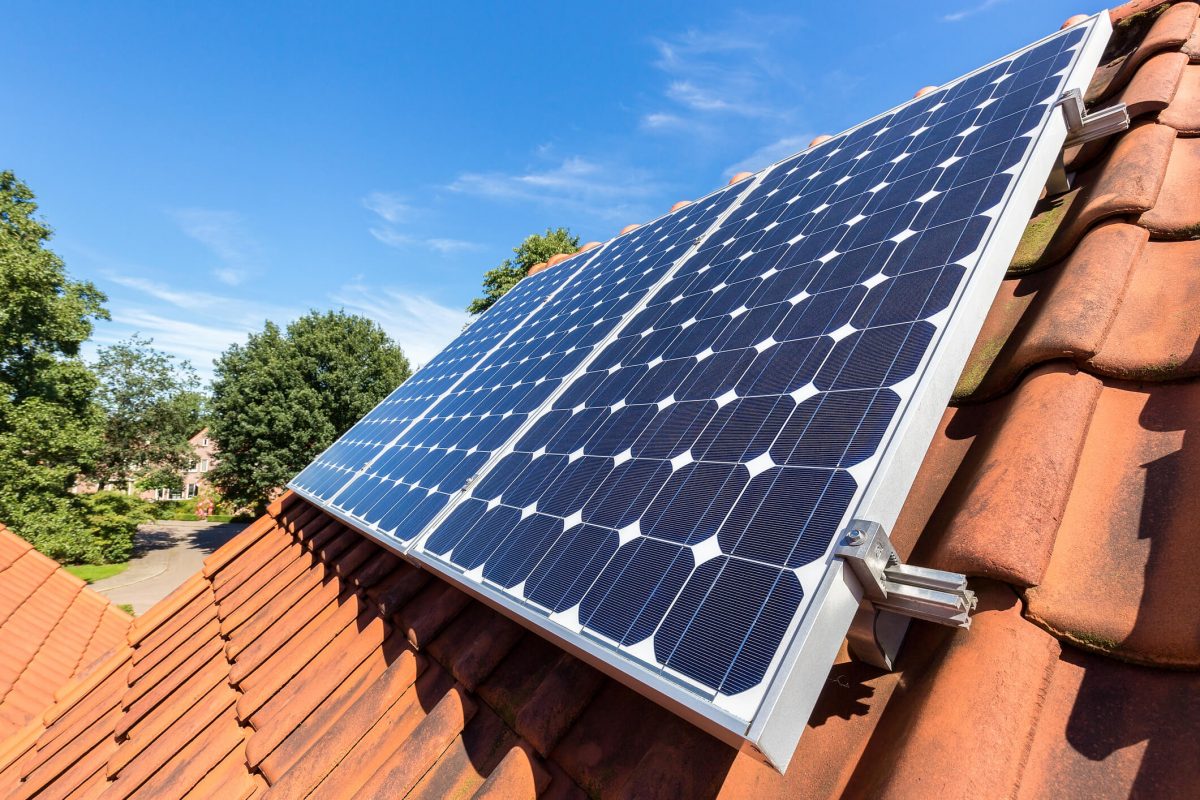Solar panels don’t maintain themselves—and that’s where Operations and Maintenance (O&M) professionals come in. Behind every home solar system that reliably powers morning coffee makers and evening air conditioners stands a skilled technician ensuring peak performance year after year.
O&M solar jobs represent one of the fastest-growing segments within solar industry careers, combining hands-on technical work with meaningful environmental impact. These professionals monitor system performance, troubleshoot issues, conduct preventive maintenance, and ensure homeowners get maximum energy production from their investment. Unlike installation work that moves from site to site, O&M roles offer stable, long-term positions as the millions of existing solar systems nationwide require ongoing care.
The career path welcomes both newcomers and experienced professionals. Entry-level technicians start with routine inspections and basic repairs, while senior specialists manage complex diagnostics, coordinate supply chains for replacement parts, and optimize system performance across multiple sites. With median salaries ranging from $45,000 to $75,000 and strong job security—solar systems typically operate for 25+ years—O&M positions offer financial stability alongside environmental purpose.
Whether you’re considering a career change or simply curious about who keeps residential solar running smoothly, understanding O&M roles reveals the essential human infrastructure behind America’s clean energy transition.
What O&M Solar Jobs Actually Involve

Keeping Systems Running at Peak Performance
Solar panels are remarkably low-maintenance, but regular care keeps them operating at maximum efficiency—which means more savings for you. Think of O&M (operations and maintenance) professionals as the mechanics who keep your solar investment running smoothly year after year.
The most important task is panel cleaning. Dust, pollen, bird droppings, and debris can block sunlight and reduce your system’s output by 15-25%. O&M technicians use specialized equipment and techniques to safely clean panels without scratching their protective surfaces.
Beyond cleaning, these professionals regularly inspect electrical connections, ensuring everything stays secure and corrosion-free. They monitor your system’s performance data to catch potential issues before they become costly problems. If your panels aren’t producing as much energy as expected, trained technicians can quickly diagnose whether it’s a wiring issue, inverter problem, or shading concern.
Most homeowners schedule maintenance visits once or twice yearly, though your location and environmental conditions may require more frequent attention. This proactive approach maximizes your return on investment and extends your system’s 25-30 year lifespan, keeping your energy bills low and your environmental impact positive.
Troubleshooting When Things Go Wrong
When solar panels aren’t performing as expected, O&M technicians become energy detectives. They use monitoring software to spot when a system produces less power than it should, then investigate the cause. Maybe it’s something simple like dust buildup blocking sunlight, or perhaps a faulty wire connection needs repair.
The problem-solving aspect makes these jobs engaging and varied. One day you might troubleshoot inverter issues, the next you’re replacing damaged panels or recalibrating monitoring equipment. Technicians rely on diagnostic tools, visual inspections, and their growing expertise to pinpoint issues quickly.
What makes this work rewarding is seeing immediate results. When you identify why a system isn’t generating expected savings for a homeowner and fix it, you’re directly helping families reduce their energy bills while supporting clean energy goals. It’s hands-on problem-solving with real environmental and financial impact.
This troubleshooting skillset is increasingly valuable as more homes and businesses adopt solar. Every system needs occasional maintenance, creating steady job opportunities for people who enjoy detective work with practical, positive outcomes.

Where O&M Fits in the Solar Supply Chain
The Long Game: Why Every Installation Needs O&M
When you invest in solar panels, you’re making a commitment that spans decades—most systems come with 25-year warranties and can last even longer. But here’s what many homeowners don’t realize: your panels need regular attention to deliver on that promise.
Think of O&M professionals as the guardians of your solar investment. While solar panels don’t have moving parts like your car engine, they still face daily exposure to weather, dust, pollen, and environmental wear. Over time, these elements can reduce your system’s efficiency by 15-25% without proper maintenance.
O&M technicians perform regular health checks on your system—cleaning panels, inspecting wiring, monitoring performance data, and catching small issues before they become expensive problems. This ongoing care ensures your panels generate maximum electricity year after year, protecting the return on investment that made solar attractive in the first place.
Without dedicated O&M support, you risk losing both energy production and money. With it, you’ll enjoy decades of clean energy and lower electric bills, making your sustainable choice a financially smart one too.
Coordinating Parts, People, and Schedules
Behind every smoothly running solar system is careful coordination. O&M professionals manage the logistics that keep your panels performing optimally. This means ordering replacement parts before they’re urgently needed, scheduling routine maintenance visits around weather and your availability, and tracking warranty coverage to ensure you’re never paying out-of-pocket for covered repairs.
These technicians work closely with the solar supply chain to source quality components quickly. They maintain detailed service records, coordinate with manufacturers when equipment needs attention, and plan visits efficiently to minimize disruption to your daily routine. Think of them as project managers for your solar investment—ensuring the right person with the right part arrives at the right time, so your system keeps generating savings year after year.
Skills That Make You Valuable in O&M
Technical Know-How (That You Can Learn)
The good news? You don’t need an engineering degree to break into solar O&M. Most technical skills are highly learnable through vocational programs, certifications, or on-the-job training.
**Electrical basics** form your foundation—understanding voltage, current, circuits, and how to safely use a multimeter. Think of it like learning to check your car’s oil; once someone shows you, it becomes second nature.
**Safety protocols** are non-negotiable but straightforward. You’ll learn proper lockout/tagout procedures, how to work safely at heights, and when to wear protective equipment. These are common-sense practices designed to keep you and your team safe every day.
**Monitoring software skills** sound intimidating but are actually quite user-friendly. Modern solar monitoring platforms are designed with intuitive dashboards—similar to checking your smartphone’s battery health. You’ll learn to spot performance dips, generate reports, and identify which panels need attention.
Many community colleges offer solar technician certificates in just a few months, and manufacturers provide free training on their specific equipment. The solar industry actively wants to train newcomers, making this an accessible career path for motivated learners at any stage of life.
Soft Skills That Set You Apart
While technical knowledge gets you in the door, it’s often your people skills that determine how far you’ll advance in solar O&M roles. These positions require regular interaction with homeowners who may feel anxious about their solar investment or frustrated when issues arise.
**Communication skills** are essential—you’ll need to explain technical problems in simple terms that put customers at ease. Instead of saying “your inverter’s experiencing DC voltage fluctuations,” you might explain “one component needs adjustment to help your panels work more efficiently.”
**Problem-solving abilities** matter because every home installation is unique. You’ll encounter unexpected situations that require creative thinking, from dealing with unusual roof configurations to troubleshooting systems installed by different companies.
**Customer service excellence** builds trust and repeat business. Homeowners remember technicians who arrive on time, respect their property, listen to concerns, and follow through on promises. Your positive attitude can transform a stressful service call into a reassuring experience that strengthens their confidence in solar energy.
These interpersonal skills become even more valuable as you advance into supervisory roles, where you’ll coordinate teams and manage customer relationships at scale.
Career Paths and Growth Opportunities
The solar industry offers a clear ladder of advancement, making O&M work an excellent entry point for building a meaningful career in renewable energy. Whether you’re starting fresh or transitioning from another field, the progression path is straightforward and rewarding.
Most professionals begin as **O&M technicians**, learning hands-on maintenance, system monitoring, and troubleshooting at individual solar sites. This entry-level position typically requires technical training or certifications rather than a four-year degree, making it accessible to many career-seekers. You’ll gain practical experience with solar equipment while earning competitive wages—often $40,000-$55,000 annually to start.
After 2-3 years of field experience, technicians often advance to **senior technician or lead technician roles**, taking on more complex repairs, mentoring newer staff, and overseeing multiple systems. This bump typically increases earnings to $55,000-$70,000 and involves less physical labor with more problem-solving responsibilities.
The next tier includes **site manager positions**, where you’ll coordinate all maintenance activities at one or more solar facilities. Site managers handle scheduling, budget oversight, vendor relationships, and performance optimization. These roles require strong organizational skills alongside technical knowledge.
For those interested in the broader operational picture, **logistics coordinator** positions focus on parts inventory, equipment procurement, and coordinating service across multiple locations. This path suits individuals who enjoy supply chain management and strategic planning.
The highest O&M positions include **regional supervisors or operations managers**, overseeing entire portfolios of solar installations. These professionals earn $80,000-$110,000+ and shape maintenance strategies that keep thousands of panels producing clean energy efficiently. Each step up not only increases your income but also expands your positive environmental impact.

Why O&M Jobs Are Growing Fast
The solar industry is experiencing unprecedented growth, and that’s excellent news for anyone considering a career in operations and maintenance. In the United States alone, solar capacity has more than doubled in the past five years, with hundreds of thousands of new installations added annually. This expanding solar market translates directly into more O&M job opportunities.
Here’s the simple math: every solar panel system installed today needs regular maintenance for the next 25 to 30 years. That’s decades of steady work opportunity. As solar becomes more affordable and widespread, the backlog of systems requiring professional care grows exponentially each year.
Unlike installation jobs that end once the panels are up, O&M positions offer long-term stability. Solar systems need regular inspections, cleaning, monitoring, and occasional repairs throughout their lifetime. Weather events, equipment wear, and technology updates all create ongoing maintenance needs.
Industry experts project that O&M jobs will grow by over 60% in the next decade, outpacing many other technical fields. This growth isn’t just in residential solar—commercial buildings, solar farms, and community solar projects all need dedicated maintenance teams. For job seekers, this means diverse opportunities, competitive wages, and the chance to build a lasting career in clean energy while helping homeowners protect their solar investments.
Breaking Into Solar O&M Careers
Getting started in solar O&M doesn’t require a four-year degree, making it an accessible career path for many people. Most technicians begin with a high school diploma or equivalent, then pursue specialized certifications that demonstrate their skills to employers.
The North American Board of Certified Energy Practitioners (NABCEP) offers the PV Installation Professional certification, which is highly valued in the industry. For those focused specifically on maintenance work, the NABCEP PV Technical Sales certification or state-specific electrician licenses provide strong foundations. Many community colleges now offer solar technology programs that combine classroom learning with hands-on experience, typically completed in less than a year.
Several training programs provide multiple entry points into the field. You might start as an apprentice or helper, working alongside experienced technicians while learning the ropes. This approach allows you to earn while you learn, gaining practical knowledge about equipment troubleshooting, safety protocols, and customer service.
Another common pathway is through electrical work. If you already have experience as an electrician, transitioning to solar O&M becomes much smoother since you’ll already understand wiring, safety procedures, and diagnostic techniques.
Many solar companies offer their own training programs for new hires, especially as the industry continues growing rapidly. These employer-sponsored programs often cover specific equipment brands and company procedures, preparing you for immediate contributions to their teams.
The investment in certification typically ranges from a few hundred to a few thousand dollars, and many programs can be completed in months rather than years. With solar installations increasing nationwide, companies actively seek qualified O&M professionals, making now an excellent time to enter this growing field.
What Homeowners Should Know About O&M
Understanding the O&M workforce matters because these professionals are the guardians of your solar investment. Quality operations and maintenance services directly impact your system’s performance, longevity, and the money you save each month on electricity bills.
When your solar panels are installed, that’s just the beginning of the relationship. Skilled O&M technicians ensure your system operates at peak efficiency for its entire 25-30 year lifespan. They catch small issues before they become expensive problems, optimize performance based on seasonal changes, and keep your warranties valid through proper care.
So what should you look for in O&M providers? First, verify they employ certified technicians with proper training—not just general electricians. Ask about their monitoring capabilities; the best providers track your system’s performance in real-time and proactively address dips in production before you notice them on your bill.
Response time matters too. How quickly can they address issues? Do they offer preventive maintenance packages or only reactive service calls? A quality provider should offer regular check-ups, cleaning services, and performance reports that show you’re getting the production you were promised.
Remember, choosing a solar company that invests in professional O&M teams means you’re partnering with a business committed to your long-term satisfaction, not just making the initial sale. Your solar system is a decades-long investment—make sure it has professional support to match.
Solar O&M professionals are the unsung heroes who keep your clean energy investment performing at its best year after year. These skilled technicians ensure that your solar panels continue delivering the savings and environmental benefits you signed up for, often for 25 years or more. Without dedicated O&M teams monitoring performance, conducting regular maintenance, and quickly addressing issues, even the best solar installation would gradually lose efficiency and reliability.
For homeowners, this means peace of mind knowing that trained professionals are watching over your system. When you see consistent energy production and lower utility bills month after month, that’s the direct result of quality O&M work. These careers represent the solar industry’s commitment to long-term customer satisfaction, not just installation and moving on.
As solar adoption continues growing nationwide, O&M jobs will only become more critical. Whether you’re considering a solar career or simply want to understand who’s supporting your system, remember that O&M professionals bridge the gap between your initial investment and decades of reliable, clean energy production. They’re essential to making solar a truly sustainable solution for your home and our planet.









